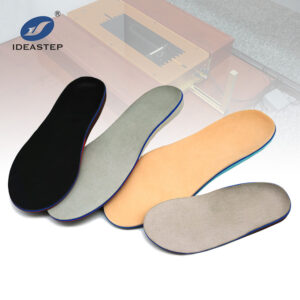What Are Custom Orthotics and How Do I Find Good Ones?
Insoles cushion your feet while also providing assistance where it’s needed. Orthotics perform the same thing, except they’re created to correct your foot imbalance and are customized to your unique needs. They are worn inside your shoes to relieve tension and pressure on your body by realigning your feet without the need for surgery, similar to how glasses function to relieve eye strain.
Orthotics Have a Lot of Advantages
Even minor irregularities in your feet can have a significant influence on the rest of your body. Knee, back, and other body components can all be affected by poor posture. Custom orthotics can assist correct the way we stand and walk, and they must be custom designed since they aid by spreading pressure evenly around your feet. Orthotics will not modify your anatomy permanently, but they will make your daily activities more comfortable.

Orthotics Come in a Variety of Forms
When looking for orthotic insoles, it’s crucial to understand that there are two varieties.
Custom orthotics are more expensive because they are manufactured precisely for your problems. Orthotics from a drugstore or department store are less expensive, but they may not be tailored to your exact needs. Shoe firms frequently utilize standard thin liners in their shoes because they don’t want to limit the market by creating shoes that only a certain demographic may wear. Standard liners do not always give adequate support for your feet, so it’s a good idea to try non-prescription orthotics before investing in costly custom-made orthotics.
Orthotics made to order
There are a variety of types and materials utilized in bespoke orthotics.
Soft orthotics are made of soft materials that are designed to absorb shock, relieve pressure, and improve balance. The soft material can quickly adapt to various weights, making them an ideal alternative for persons with arthritis, diabetes, or malformed feet.
Flexible parts and high-density rubber are used to make semi-rigid orthotics. Flat feet, high arches, weak ankles, shin splints, and heel, hip, back, or knee aches might all benefit from these orthotics. When attempting to control excessive motion, the materials are especially useful.
Rigid orthotics are constructed of a solid substance that is likewise intended to limit excessive motion, but they are designed for heavier persons or specific footwear, such as dress shoes, heels, cleats, and dance shoes.
When purchasing custom-made orthotics, make sure to address any difficulties you may have and fit the insole form to your feet. They must be manufactured using a 3D cast of your foot or an impression of your foot. To get an impression of your feet, some organizations merely want you to stand on a flat surface. This procedure, however, does not obtain an impression of your entire foot and hence is not a true custom-made orthotic.
The 3D image can be obtained in two ways. Plaster slipper casting is easy to do and captures all of your foot’s characteristics. You simply apply a plaster straight to your foot while lying on your stomach for 5-7 minutes, and you’re done! A foam box can also be used to create a 3D representation of your foot. It entails pressing your foot into a foam box without requiring you to lie down on your stomach. This method is suitable for those who do not require as intricate a shape design as the plaster slipper.
After the foot impression is obtained, it is scanned with a 3D laser scanner and converted into a digital file. Your podiatrist will have the necessary equipment to create a positive mold, and the materials will be heated and moulded over the mold, depending on the type of material or orthotics you require. The particular alterations will be made based on your podiatrist’s assessment when the shell of the orthotic is completed.
Orthotics are expensive.
Orthotics can range in price depending on whether they are non-prescription or custom made. More than 1 million orthotics alternatives were reported in 2013, with prices ranging from $10 to $800. Basic inlays, which cost $10 to $20 at the drugstore, to more complex orthoses, which cost $150 to $200, are all available off the shelf. Semi-custom orthoses (off-the-shelf models that can be customized) cost $60 to $300. The cost of custom orthotics can range from $300 to $800.
It’s natural for orthotics to feel weird when you first put them on. New aches, redness, or blistering should not be caused by proper orthotics. If this happens, you may need to have them adjusted again. Orthotics won’t make your symptoms go away overnight, but with regular use, your feet should start to heal and realign in no time. A little personalization and adjustment, depending on your lifestyle, might provide more comfort and prevent future injuries and suffering.
